100+ video marketing stats you need to know
Have you got a brand new eCommerce business and you’ve just started DropShipping? Or maybe you’ve been neglecting your video marketing strategy for some time and 2020 is the year to finally make it start happening? Whatever your motivation, when you’re trying to grow your business, a strong video marketing strategy can be the key to expanding the reach of your business and increasing your profits – as these incredible video marketing statistics prove!
How long has video been around?
The oldest surviving video recording was produced in 1888, by Louis Le Prince. It is just 2.11 seconds long, and was recorded at 12 frames per second. It shows people walking around Roundhay Gardens in Leeds, and stars Le Prince’s mother in law, who died the day after the scene was filmed. You can see the clip here on YouTube.
What was the first video advert?
The first TV commercial is widely acknowledged to have been for Bulova, a New York-based watch company in 1941. The ten second clip was aired before a baseball game and cost just $9 – which would be the equivalent of $150 today! It reached just a few thousand people, since only around 4,000 TV sets had been installed in New York then. Click here to see it, and marvel at how far video advertising has come.
What are the most memorable video adverts of all time?
Since video advertising has been around for almost 80 years, it’s impossible to gauge the most popular. However, there are a few that really stick with us – here in the UK anyway!
The Cadbury Gorilla drumming to Phil Collins’s song In The Air Tonight (over 10 million views on YouTube)
The Yellow Pages (JR Hartley) – this isn’t a YouTube classic, but it was seen on UK screens for a number of years from 1983, and was the fifth most popular British TV advert in a poll from 2017.
The Smash Mashed potatoes advert featuring the Martians was popular on TVs from the early 1970s and into the 1980s.
Budweiser Wassup commercial aired on TVs between 1999 and 2002. It started a phenomenon, and won advertising awards worldwide – and continues to be parodied and referenced today.
The Levis Launderette advert first aired in 1985, and led to an incredible 800% boost in sales worldwide – and sent Marvin Gaye’s I Heard it Through the Grapevine back to the top of the charts.
Where do people watch video?
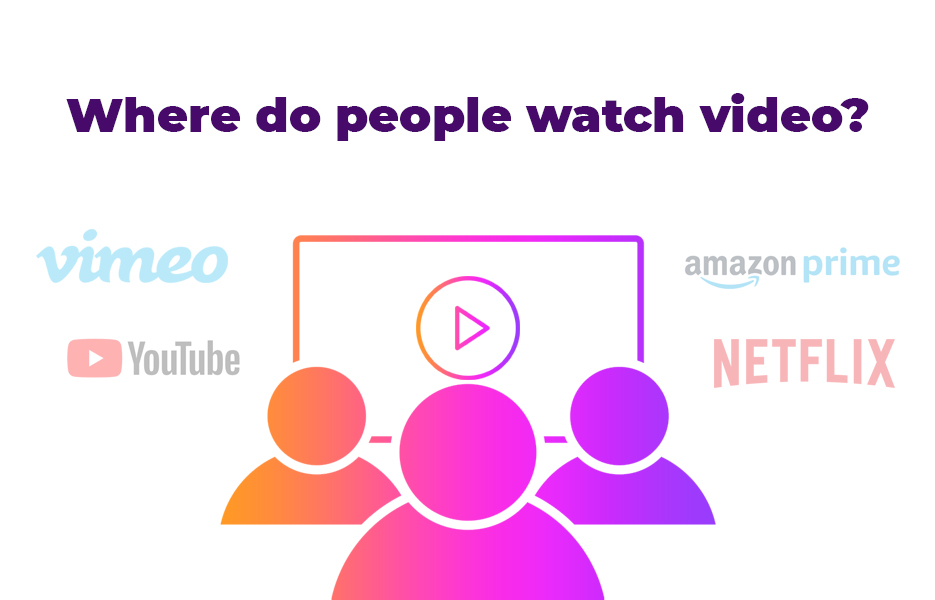
When video became a part of our lives in the 1930’s, over 65% of people went to the cinema at least once a week. Once television took over, it became more important to the family to sit and watch television together – with over 600 million people worldwide watching the moon landing in 1969. Technology evolved and multiple TVs in homes became more common, until the launch of the first iPad and iPhone in 2007 allowed us to start watching video on the go, and separately from our families.
Today, online platforms to stream video from such as YouTube, Netflix, Vimeo and Amazon Prime are much more mainstream – and worldwide, Netflix is king of the streaming services, with over 151.6 million users. Social media giant Facebook state that by the end of 2020, over 75% of all mobile data traffic will be video – meaning that we’re consuming video in more places than ever before.
Why do people prefer video?
There’s absolutely no question that people prefer video to text or images, and there’s a number of reasons for that. Video shows nonverbal communication – tone of voice, body language and gestures are key to understanding some messages. The old phrase ‘a picture speaks a thousand words’ is useful when thinking about adding images to text content, but video is estimated to be worth 1.8 million words per minute. How did the researcher come to this incredible figure, you might ask?
1 picture = 1,000 words
Video shoots at 30 frames per second (or 24fps, but when the final number is as high as 1.8 million, who’s counting?)
Therefore, 1 second of video = 30,000 words
30,000 words x 60 seconds = 1.8 million
In reality though, it’s mostly down to the fact that video is simply eye-catching. People have been found to look at video for up to five times longer than static content, wherever the video is posted – which gives much more chance for the message of the content to be seen. Whether that’s because video includes cues such as colour, music, an emotive story or some other reason, video simply hooks the viewer for longer than other media – so businesses simply cannot afford to neglect it from their marketing strategy.
Video platforms
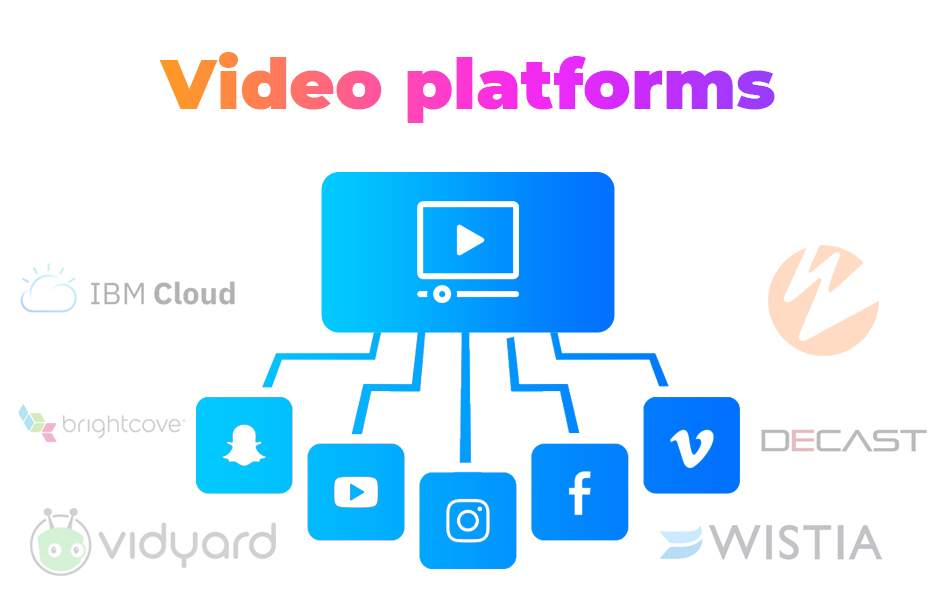
Although when we think of online videos, most of us will automatically think of YouTube, it’s not the only video hosting website out there. Businesses have different priorities, and of course there are video hosting websites that cater for those needs – especially if the business wants to post the video on different platforms.
Video hosting
OK, so YouTube is the obvious one that springs to mind here, but there’s also Vimeo, Wistia, Vidyard, Blue Billywig and Brightcove, amongst plenty of others. Not all these platforms are free – but they offer different solutions, so you can decide if what they are offering is what you need.
Live streaming
Red5 Pro, Dacast, Vimeo, IBM Cloud Video, Wowza and Brightcove are some of the popular platforms for live streaming, but they charge for their services, so might not be attainable for brand new businesses.
Luckily, there are free services available, including Twitch, which is gaining a lot of traction, especially within the video gaming community. And of course, most of the social media platforms have live video capability – Facebook Live, Instagram Live, YouTube Live, Periscope, Snapchat has Live Stories and so on.
YouTube
YouTube was launched in 2005, and today it is the name that is synonymous with video. It is the second most accessed website on the internet, with only Google getting more hits – which makes sense that there are so many YouTube statistics out there to consider!
What was the first video posted on YouTube?
The first video ever posted to YouTube was ‘Me at the zoo’ – an 18 second long clip from the elephant enclosure at San Diego zoo. It was posted on the 23rd of April 2005, and since it is so historically significant, it has now had almost 90 million views.
How much video gets watched on YouTube daily?
Over a billion hours of video are watched on YouTube every day – although we think with the quarantine situations brought on due to COVID-19, this figure is going to have increased dramatically over the last few months! Google states that YouTube reaches more viewers in the 18-49 age bracket than all the cable TV networks combined. That’s an incredible number of people – and we expect that that number is likely to grow significantly over the coming years.
How much video gets uploaded to YouTube daily?
When it comes to having enough to watch on YouTube, there isn’t any danger of running out! Over 500 hours of video are uploaded to YouTube every minute of every day. You’d have to watch continuously for over 20 days to watch one minute’s worth of uploads – and that’s without any breaks for food or sleep!
How many views has the most popular video had?
Currently the most popular video on YouTube is the music video for Despacito by Luis Fonsi featuring Daddy Yankee). It’s had 6.68 billion views so far since it’s release in January 2017.
How many YouTube channels have over 10 billion views?
Over the past three years, the number of YouTube channels with more than 1 billion views has grown more than five times. The top 50 most viewed channels have all surpassed 10 billion views, with 17 passing 20 billion views, nine surpassing 30 billion views. At the time of writing, only five channels had passed 40 billion views. Although it’ll be quite some time before we expect to see any channel managing to get over a trillion views, we’re sure the race is on!
How do people watch YouTube?
These statistics are really interesting. Over 70% of YouTube video views are from mobile devices, and over 250 million hours of YouTube watch time per day are on TV screens – so no matter whether viewers are at home or they’re on the move, clearly they’re watching!
How long do people watch YouTube for?
People don’t stop watching once they start watching videos on YouTube. YouTube has delivered more than one billion “take a break reminders” since implementing the feature in 2018. We wonder if any of the people that received those messages have got square eyes, like our parents warned us that we’d get from sitting too close to the TV?!
How much is a successful YouTube channel worth to a business?
This is a really difficult question to answer – and we’re not even going to try. That’s because it depends on how you’re defining ‘successful’, and what you’re measuring it by. Measuring conversions, click-through rates and likes can help to define how successful the channel is. If the aim of the channel is to help reach new customers and build brand awareness, then you’ll be looking at watch time, subscribers and video shares can help to define how popular the channel is. If the channel has been monetised, then the channel can be worth even more to a business – simply from having people watch the videos!
Can you sell YouTube channels?
You can, and it’s legal to do so! YouTube channels that are already set up with monetisation, and with thousands – or even millions – of subscribers are being sold for as little as a few hundred to thousands and even millions of pounds.
Vimeo

Vimeo holds a much smaller market share of the streaming video websites. Vimeo has over 170 million monthly active users, compared with YouTube which has over 2 billion monthly active users. Although there are fewer viewers, Vimeo makes it easier to reach niche communities, which might mean it is more valuable to marketers. It was founded by content creators who wanted to share their work – and today it’s the largest ad-free, open video platform.
How many monthly views do Vimeo videos get?
Vimeo videos get 715 million monthly views – and the platform is enjoying over 80% year on year growth globally. That’s still a lot of potential views, and it’s easier to target specific audiences in a particular niche.
Where are Vimeo viewers?
Around 30% of Vimeo viewers are based in the US, with 30 million users in the Middle East and Africa. It’s a less popular platform in Asia and the Pacific, with just 5 million across this area. Although there might be fewer users in these areas, Vimeo viewers access the platform in 150 countries worldwide – so it’s worth doing your research to determine whether it’s worth using for your video marketing campaigns before you turn your attention solely to YouTube.
How do people find Vimeo?
Almost a quarter of traffic to Vimeo comes from people searching for Vimeo itself. 93% of hits come from organic searches, and just 6.5% of traffic comes from paid searches. Of the traffic to Vimeo from social media, over half is from Facebook, and interestingly, almost 20% comes from YouTube! The power of cross-promotion!
How long do people spend on Vimeo?
People don’t spend nearly as much time watching videos on Vimeo as they do with YouTube. On average, people spend just three and a half minutes on Vimeo – which means that marketers using Vimeo need to create their videos carefully. You’ve got a very small window to get your message across before viewers bounce off somewhere else, so get to the point quickly.
What are the advertising options on Vimeo?
Vimeo has actively shunned advertising on the platform, and they’ve stated that this policy won’t be changing any time soon. There are no options for pre- or post-roll adverts, or overlay ads. Although that might feel like a disadvantage compared with YouTube, in reality viewers are less likely to lose patience and click to another video because an advert has annoyed them. That means that they’re more likely to focus on the content of the video when there are fewer distractions – which means they’re more likely to internalise the message of the video.
There are some limited display advertising options on Vimeo – but it depends on the type of account the user has. Only Vimeo Pro or Business members will get a completely ad-free experience. This means that content creators that are aiming to make money from their videos may depend on fans paying for their content, or you can launch a video streaming service, with ways to monetize using Vimeo OTT.
Do any marketers use Vimeo?
Absolutely, although the prospects don’t sound so good, around 20% of American marketers that are focused on B2B use Vimeo to distribute content. There are loads of tools that Vimeo offers businesses, including up to 7TB of storage, video embedding and clickable calls to action. You can also sell videos, track advanced stats and publish videos as native on social media. Different price plans are available for increased needs, ranging from £16 to £70.
Video marketing on social media
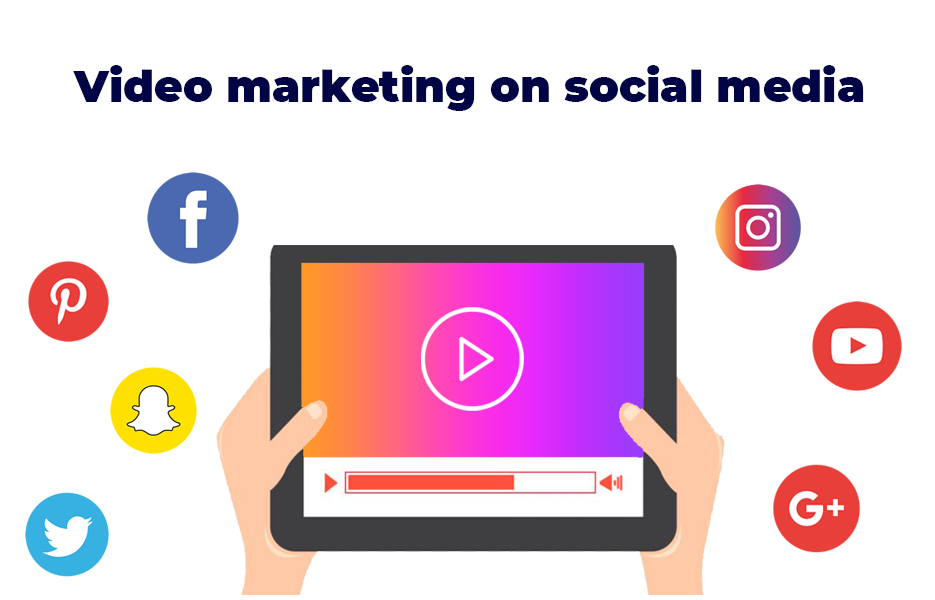
Videos are literally everywhere on social media. Between the ability to embed video directly to feeds, to record Story videos and do Live streaming, social media presents huge opportunities for video marketing – especially where customers have already engaged with brands. Social media posts with videos in them have been found to boost views by 48% – which is a huge amount of return, and increase in brand awareness.
Facebook found in a survey across Australia, France, Germany, the UK and the US that at least 60% of people expect to continue watching more social video over the next year – so now really is the time to get started with video marketing if you haven’t already.
Video streaming on social media

Customers don’t just want recorded video – daily watch time for Facebook Live broadcasts grew over four times over a year, and on Facebook, 20% of videos are live broadcasts. Facebook isn’t the only social media channel that live videos are popular though, as we’ll find out through our next section.
The biggest social media platform with over 2.4 billion active users, Facebook is a must-use for pretty much every marketing professional. Facebook added video in 2007, and currently there are more than 4 billion video views taking place on the platform every single day.
65% of all Facebook video views come from mobile users, but it’s crucial for marketers to know that 72% of those viewers are watching with the sound off – are viewers bored at work, or are they skiving off in class, we wonder?! It’s also been found that 80% of Facebook users react negatively if a video in their feed starts playing loudly – which is unsurprising considering that most are watching with sound off. Considering that 71% of Facebook users find ads on the platform relevant or highly relevant, you really don’t want to create a negative impression for your brand, so keep that sound in check.
When it comes to how much time you have to engage your viewers – well, the answer is not much. 47% of the total campaign value of a Facebook video ad is created in under three seconds. Not only that, the average video watch time on Facebook is 10 seconds, and video ads that are longer than 15 seconds have much higher abandon rates than those with shorter ones. Make your point, and make it quickly is our advice!
Videos that are posted on Facebook natively get 478% more shares than videos posted from elsewhere. That’s a HUGE increase! Don’t just share your videos to Facebook from YouTube – post them natively to get the best results. (of course, if you’re replying to a comment and you’re sharing a how-to video from YouTube, that might still be the most valid strategy for that follower!)
Yes, we know – Twitter is a text-based platform. But surprisingly, there are approximately 2 billion video views on Twitter every day – which means video views on Twitter have grown 67% year on year. Tweets with video are much more popular than those without – those with video attracted 10x more engagements than tweets without.
Remember when we said about how video captures the attention when scrolling? Perhaps it’s not surprising that over 90% of Twitter video views happen on mobile. Videos play automatically on Twitter, and it has been shown that users prefer this – and crucially, they are more likely to watch the videos to the end and remember them. Not only that, when the aim is to increase brand awareness – videos in tweets are six times more likely to be retweeted than photos.
There are three ways to promote videos on Twitter – Promoted Videos, which autoplay in timelines, Video Website Cards, which can help drive mobile viewers to you website (these deliver double the click through rate!) and In-Stream Video Ads, which are adverts that play at the start of videos from Twitter content partners.
Instagram gets over one billion hits every day. Of that figure, it is estimated that 69% of time spent on Instagram is watching videos. Instagram has allowed videos to be added to a user’s channel since 2013, and currently, Instagram offers four different types of videos:
- Feed videos – 91% of these are watched
- Instagram Live videos
- Stories – 83% are watched
- IGTV – 44% are watched
The most popular videos on Instagram are how-to tutorials, with 80% being watched, followed by behind the scenes videos (66%) and interviews (62%). Although 85% of Facebook videos are watched without sound, 60% of Instagram Stories are watched with sound on.
The most Instagram videos are watched between 8pm and 11pm – around 33%.
One in five Instagram Stories gets a direct message from a viewer. That is pretty impressive levels of engagement, but not only that, 31% of users have made a purchase directly after watching a video ad on Instagram.
When it comes to working with influencers, brands usually pay between $114 and $3,138 for an Instagram influencer to post a video, and videos on Stories cost between $43 and $721.
TikTok
Launched in 2017, TikTok is used to share short-form video content, usually between 3 and 60 seconds. Many businesses are now using TikTok for marketing to connect with their target customers – 41% of TikTok users are aged between 16 and 24. It’s a really heavily used platform too, with over 800 million monthly active users, who on average use TikTok for 45 minutes every day.
TikTok ads start at $50 per day, and can be a valuable addition to getting customers to your website, but there is so much more to marketing on TikTok than ads. For businesses that like to work with influencers, there’s a lot to be said for engaging with them on TikTok. Brand takeovers can cost between $20,000 to $200,000.
TikTok influencers can be much less expensive to work with too. On TikTok, influencers with over 2.5 million followers or more charge $600 to $1000 per post, rather than the $100 to $200 for every 10,000 to 20,000 followers on Instagram.
Snapchat
218 million people use Snapchat every single day, and the average user will spend over 30 minutes on the platform. The most popular age group that uses Snapchat is 13 to 17 – 69% of this age group use the app, but 62% of 18 to 29 year olds use it.
Businesses can start using Snapchat ads for an affordable $5 per day, and there are three types of ads available – Snap Ads, Filters and Lenses.
However, it was found that 69% of Snapchat users skip ads on Snapchat either ‘always’ or ‘often’. Although on face value it might seem like Snapchat marketing isn’t worth it, eCommerce powerhouse Wish were able to use Snapchat for a much more efficient marketing campaign – including 80% lower CPI (Cost Per Impression) for Story ads and 26% lower CPI for Snap ads.
There might be a smaller user base on Snapchat than other platforms, but considering the low costs associated with Snapchat ads, with the right strategy Snapchat marketing can provide a great return on investment.
We wrote a post about Pinterest last year that contains a huge amount of information about marketing on the platform. In 2019, Pinterest grew from having 128 million to 335 million monthly active users – that’s a huge increase! Although Pinterest is a visual bookmarking website, it can be used to create communities and social interaction like sharing, liking and commenting, which is why we’re including it here.
Just like on other platforms, video captures the attention much more than a static image does (and we’re guilty of watching ALL the cute and funny animal videos as we’re scrolling our Pinterest feed!). Since 83% of weekly US Pinterest users have made a purchase based on pins from brands, we’re certain that video pins are likely to see higher returns than regular pins.
There aren’t (currently) any options for posting live videos on Pinterest, but unlike other platforms, the lifespan of a pin is almost infinite – so if a user searches for a term that your pin matches, even if you posted it two years ago, you might suddenly see it starting to be repinned. And since 77% of weekly users have discovered a new brand or products on Pinterest, those video pins can be even more valuable.
66% of marketing professionals are planning to post video on LinkedIn in 2020, and 87% of marketers that have already posted video on the platform state that it has been an effective channel. Although generally customers aren’t engaging with brands on LinkedIn as much as on other social media channels, there are still ways to promote yourself on LinkedIn.
Don’t forget, not all video will work for all platforms – that funny Snapchat video is likely to be ignored on LinkedIn, so create your video content carefully. Telling the story of your brand, promoting your products and video blogging are all useful strategies for LinkedIn marketing – but remember, think mobile first. Over 57% of engagement on LinkedIn is mobile, and that figure will be increasing. Keep your LinkedIn videos short and to the point, and use the same strategies you would on other social media channels – make sure the quality and aspect are correct, and always add subtitles so that viewers who are watching on mute can understand the message of your video.
Mobile video marketing
Video marketers need to remember when they’re creating video that smartphones are not simply tiny televisions – mobile devices are a completely different medium. You don’t need to conduct your own research though to find out the best ways to go about video marketing. Big corporations like Facebook and Google are publishing research that can help marketers all the time. This post about mobile video adverts is particularly useful – and there are some key takeaways.
- Creating brand new, short-form video specifically for mobile is important.
- Testing and measuring the success of adverts should be done on a weekly basis, not on a monthly or a six-monthly basis.
- Use different content for different platforms. News feeds, Stories and adverts are very different and should be treated as such.
- Measuring results, rather than seconds of watch time can be more valuable for businesses.
- Understanding your audience will bring greater success.
- Using the right metrics is key – different platforms have different reporting tools. Find which works best for your business.
We already know that there are many people using YouTube on mobile devices – over 70% of views are from a mobile. In fact, people are 1.5 times more likely to watch video daily on their smartphone than on their PC.
What is video marketing?
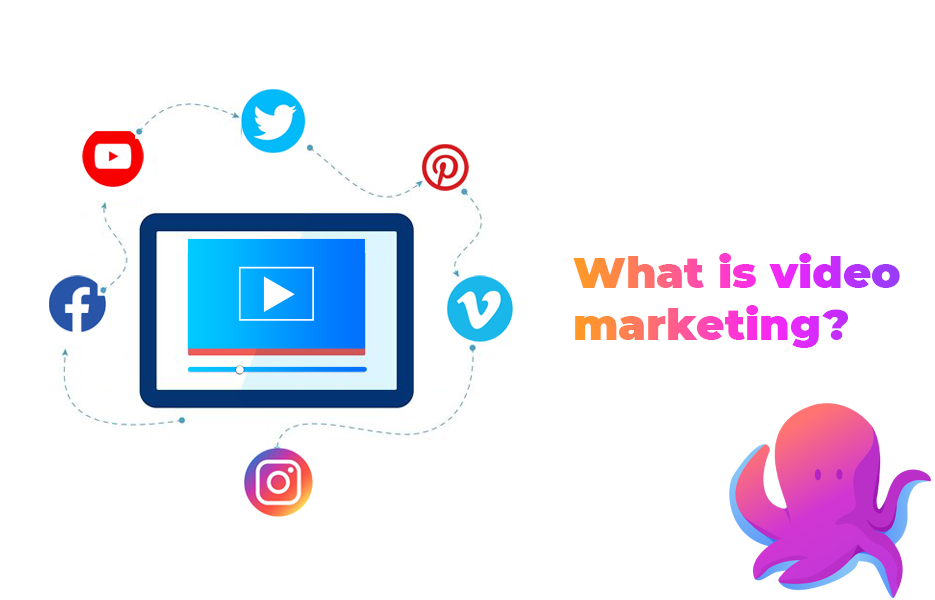
Video marketing is exactly what it sounds like – using videos for marketing purposes, to promote products or services, to increase engagement on different channels, to educate or to reach more customers or consumers.
What ROI can you get from video marketing?
89% of video marketers say video gives them a good ROI. In addition, over 80% of video marketers agree that video helps with lead generation, with increasing traffic to their website, and with directly helping increase sales.
Do customers really want more video from brands?
They do. Consumer surveys have found that when asked what sort of content that they want more of from brands, 54% reply yes to videos. That’s 20% more than say yes to ‘social videos’ – although it’s possible that some respondents haven’t understood quite what that means.
What types of videos work for video marketing?
There are plenty of different types of videos that can help increase brand awareness, the numbers of products purchased and so on. Think logically – what will your target customer wat to see? We talked about some of the most useful videos last year when we wrote about the best video editing software, but here’s a quick round up of some that you might want to consider.
Vlogs (video blogs)
Vlogs are simply like a video diary – and there are many influencers that are making the most of vlogging to increase their reach. They’re a great way to give customers an insight into your company – many companies are sharing short clips on Stories on social media channels, but they’re also using those clips on weekly vlogs. Of course, vlogs can include sponsored content, or affiliate links to increase the potential for earning.
Video interviews
You might think about interviewing a customer, an expert or someone within your team about the product or service you’re currently promoting. Customers want to know whether your product or service is any good, and of course, if an expert, or a (legitimate) customer goes on camera to talk about it, then it’s an endorsement.
If you’re selling makeup, for example, you might ask a makeup artist to trial your products, and get them on camera for an interview. Encourage them to talk frankly about the product, whether they’d recommend it, why it was good and so on. They might be able to tell your customers that the product works as well as, or better than a much more expensive product – and many of us love a dupe!
If getting someone in from outside isn’t a possibility right now, then look within your team. Maybe a new team member could talk about their impression of the products, or you might talk to one of the most established team members about how a product came into being.
Tutorial videos
There can’t be many of us who haven’t turned to the internet to find out how to do something. Since we can get much more information from a video when it comes to learning a new skill than from a book (most of the time…!) there’s little wonder that instructional tutorial videos are so popular. Want to know the latest makeup technique, or how to fix a leaky tap? Someone has almost certainly posted a how-to video on YouTube.
Product demos and reviews
More than two thirds of consumers prefer to watch a video about a product to reading about it – which makes sense when you consider how much more information you can get from a demonstration or a review video. 30% of mobile shoppers in the US say video is best for finding new products, and 48% of Australians say they’ve bought something after seeing a branded video.
When you’re thinking about the pages on your website that feature video, adding conversational marketing to your strategy can be a great move – 79% of customers are happy to use messaging apps to get customer service. If you’re live broadcasting, or adding video to your website, you can encourage customers to engage with you in this way.
“Best” + “right now” mobile queries have grown by over 125% in the last two years (e.g., best online sales right now, the best phone out right now, best stocks to invest in right now, best suv lease deals right now). For businesses trying to sell more of their products, this is valuable information when it comes to their video marketing strategy.
Not only that, mobile watch time of test drive videos on YouTube has grown by more than 70% over the last two years. Selling a car? A video test drive and review could be just the way to provide the added information your potential buyers want. This even applies when customers are in store – 55% of shoppers say they use online video while they’re shopping in a retail outlet.
How long should marketing videos be?
Over 80% of promotional videos are three minutes or less. That’s because the amount of time people actually watch for depends on how long the total video is. Around 68% of viewers will watch a promotional video to the end if it is less than a minute, but if the video is more than 20 minutes, less than 25% of people will get to the end.
How important are voice overs?
Over 75% of customers will decide not to buy something if the video annoys them (we’ve done it ourselves!). Using an informal, chatty tone is preferred by 83% of consumers – so skip the hard sell mentality and think about using video to show the product off as you would to a friend. And remember, a huge percentage of consumers watch videos with the sound off – over 92%! Around half of those consumers rely on captions when they’re watching video, so be sure to add captions
How often should you post promotional videos?
Over 80% of brands are sharing videos on their Instagram feed, or their Stories every week, and 90% of brands are posting video on YouTube on a weekly basis. However, as we established when we looked at the best times to post on different social media, posting is about quality and consistency, rather than aiming to post a certain number of times a week.
What are the best video editing software?
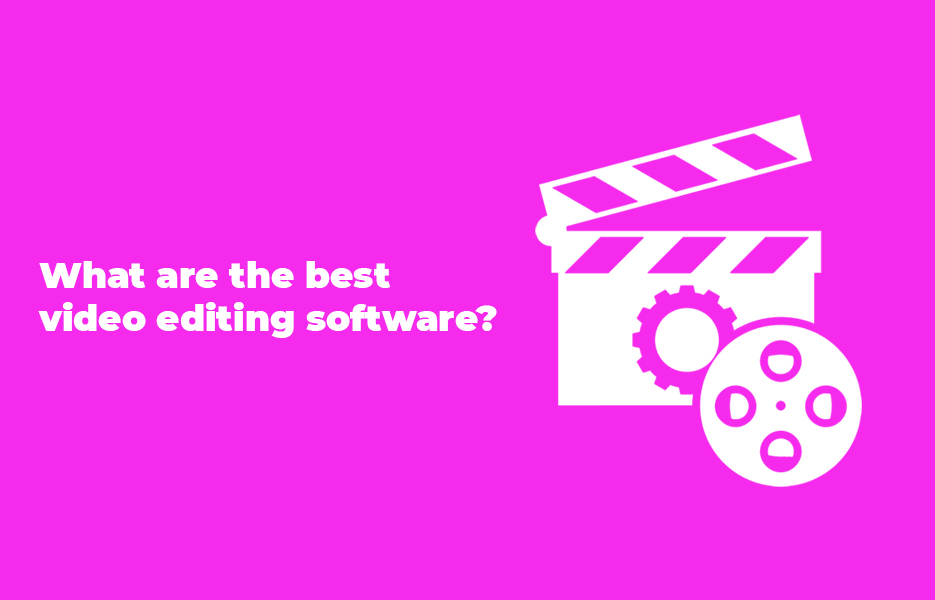
It depends on what you want to spend. If you’re looking at professional software packages, you’ll probably end up needing to spend out on Adobe Premiere Pro CC ($239 for a yearly subscription) or Final Cut Pro ($299 for a one-time fee). You’ll also need to consider whether you need to upgrade your PC – most video editing software is pretty demanding. Luckily though, if you’re a novice and just learning about video editing there are plenty of free video editing software packages available that can provide a professional result – we talked about them on our post here.
How much does video marketing cost?
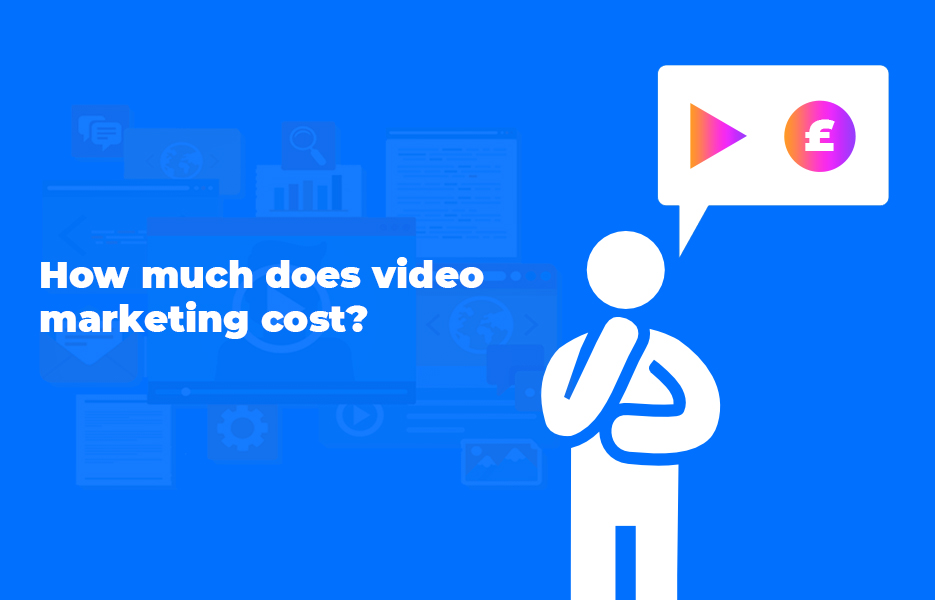
This is a great question, but the answer can vary wildly! Businesses that have the skills necessary to shoot their videos with existing equipment and using free or inexpensive video editing software might be able to produce videos with no additional cost apart from their time. Small businesses might even be able to do all the video editing they need on a smartphone or tablet using a video editing app. If the only investment required is time, then your video editing provides even better ROI than it already does! That said, even pros can take several hours to complete production on a video, so you’ll need to set expectations before starting work.
For businesses that in-house production isn’t an option, then agencies or independent videographers may be prepared to work with you to create what you need. This can cost anywhere from a few hundred pounds for a simple video, through to £50,000 or more for an advert with high standard of production. Remember, you’re not just paying for the video to be shot – you’re paying for pre-production and planning time, as well as post-production like editing, finding and adding royalty free music or voice-overs. If you want more complex effects or animation adding, you’re likely to need to pay more.
How can you measure the success of video marketing?
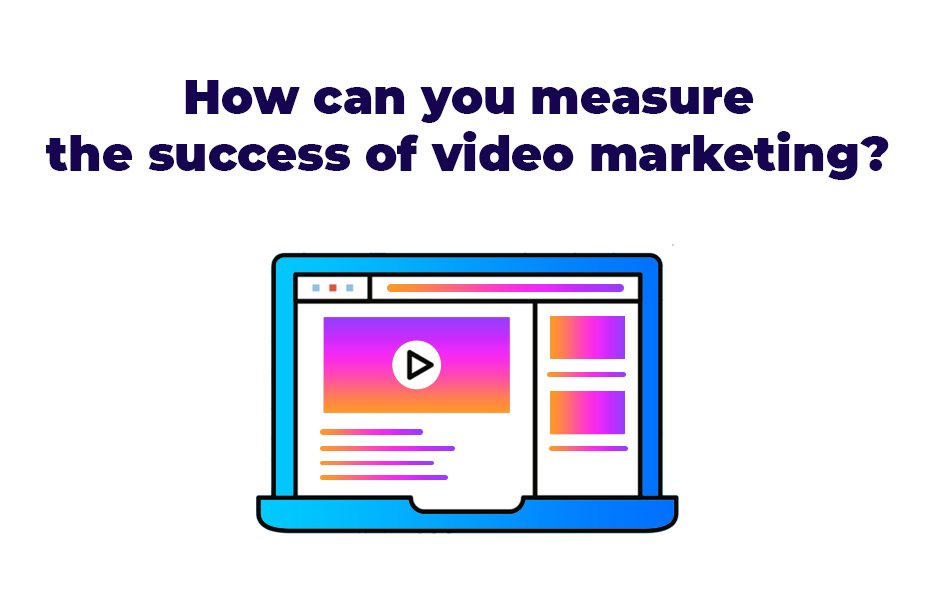
There are a number of ways you can count the success of your video marketing, but you’ll need to think carefully about what you’re going to measure before you even record your videos.
Views are one metric you can use to measure the success of a video – but they’re pretty subjective. What counts as a view on YouTube is much longer than on Facebook or Instagram – 30 seconds on YouTube compared with 3 seconds on Facebook or Instagram.
Shares can be useful to know – if your video is shared by a viewer, you know they thought it was worth the person (or people!) they shared it with seeing it! The more shares your video gets, the more people are likely to see your video. Simple. You’ll also want to pay attention to impressions – how many times your content is displayed – and engagement metrics like numbers of likes, dislikes and comments.
If you’re aiming to convert, click-through rate (CTR) and buyer metrics, as well as traffic sources will be valuable to you. Finally, if you’re making video to target a certain demographic, or section of a population, then you’ll want to look carefully at the viewer demographics for each video. If you’re not reaching viewers in the right age bracket, industry and so on, your efforts might have been in vain – but if that’s the case, you can use that information to help you understand what went wrong, or how you can adjust your strategy next time.
Where can you post video?

Clearly, with how eye-catching video is and the return it delivers, it makes sense to use video wherever you can. The average user will spend up to 88% more time on websites with video than they do on websites without video – and the more time they spend on a website, the more likely they are to convert to a paying customer.
We’ve spoken about the increase in the success of social media posts that have video included, and there doesn’t seem to be any places that video won’t work to increase your video marketing success. For example, customers are 19% more likely to open an email with the word video in the subject line, actually adding video to your marketing emails can increase click-through rates by up to 300%. Embedding videos on landing pages can increase conversion rates by up to 80%. That’s a HUGE return for very little extra work – and remember, video is likely to keep people on a page for longer, which in turn means they’re more likely to convert as a result.
What is the future of video marketing?

There are plenty of developments in video marketing, so if you’re thinking adding videos here and there is as much as you need to do to stay ahead, think again.
- Facebook is promoting the value of 360° videos, which provide much more detail for viewers.
- Virtual Reality (VR) and Augmented Reality (AR) is going to become more important than ever – remember Pokémon Go? There will be more demand for this kind of technology from consumers too.
- Video platforms will become more and more popular. If you’re not using TikTok or Snapchat for marketing yet, you’re potentially already behind. Don’t miss out on crucial sales because you think you’re too old for a social media platform!
Video marketing might not be essential for businesses today, but there are so many reasons that you should use it – the biggest being the potential return on investment that video offers. Whether you post video on YouTube, your social media channels, your website or on landing pages, you’re almost certain to see a huge lift in your sales and profits by implementing a video marketing strategy.
Our key takeaways:
- More video is being consumed than ever before, and customers want more video from brands.
- Think mobile first – more video is being watched on phones or tablets than on PCs or TVs.
- Don’t create one video and post it everywhere – creating the right content for the channel is crucial.
- Use a range of types of video, but be guided by what your customers need.
- Video marketing doesn’t have to be expensive – using clips recorded on your phone and editing them with free apps or software can be effective.
If you’re planning to add video to your business to help increase your profits and you haven’t considered DropShipping as a strategy, why not? Take a look at what DropShipping can offer your business and see how easy it is with a free Avasam account. Sign up here – there’s no credit card required, and you won’t need a subscription until you’re making more than 10 sales per month. Want to know more, or have a question? Get in touch.

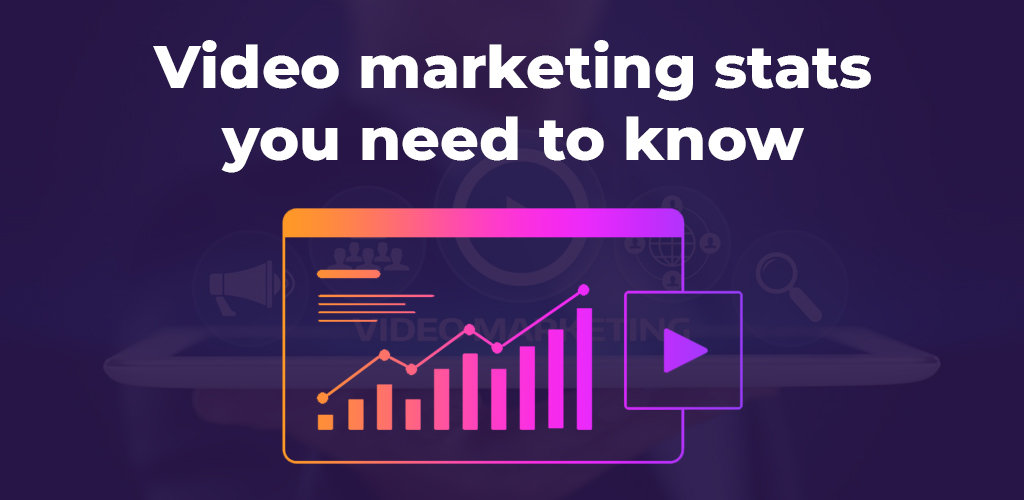






DropShip products from verified suppliers to diversify your inventory and scale your eCommerce business